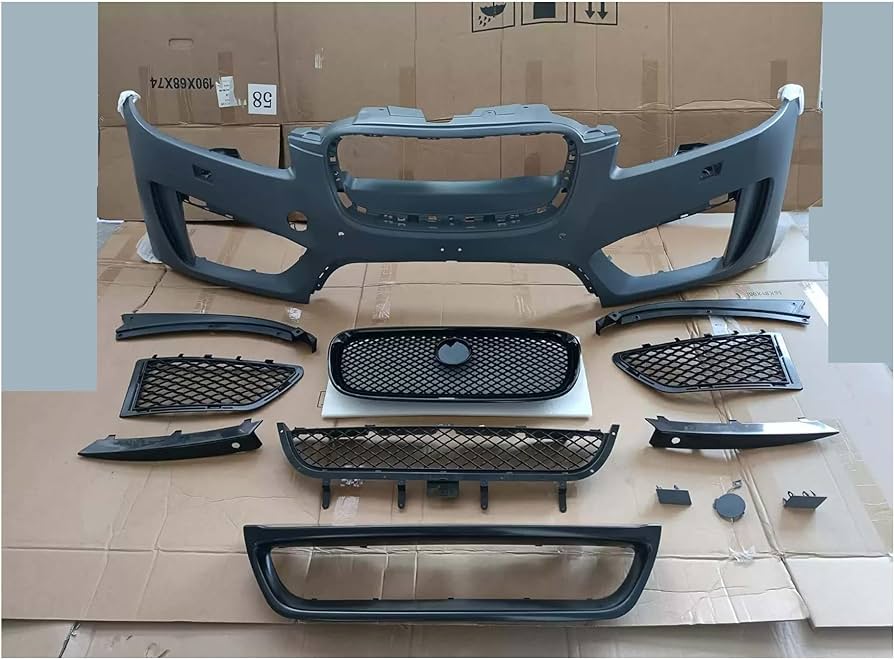The front bumper of a car is more than just a protective shield; it is a key design element that defines the vehicle’s visual identity and contributes to its overall aerodynamics. Over the years, automotive engineers and designers have continuously innovated, giving rise to an evolution in front bumper designs. This article delves into the fascinating journey of car front bumpers, exploring their purpose, evolution, and the unique design elements that have shaped the automotive landscape.
Historical Perspective: The earliest automobiles featured simple, utilitarian front bumpers primarily designed for protection. As cars became more prevalent, manufacturers started incorporating stylish elements into the design. In the mid-20th century, chrome bumpers adorned many classic cars, reflecting the era’s fascination with bold, shiny aesthetics. These bumpers served both functional and aesthetic purposes, emphasizing the importance of blending form with function.
Safety and Regulations: The evolution of front bumpers took a significant turn in the 1970s when safety standards and regulations became paramount. Bumpers had to comply with stringent crash test requirements, leading to the development of energy-absorbing materials and reinforced structures. This era marked a shift towards larger, more substantial bumpers that aimed to minimize damage during low-speed collisions. While these bumpers were effective in meeting safety standards, they often lacked the aesthetic appeal seen in earlier designs.
Aerodynamics and Efficiency: In the late 20th century and into the 21st century, advancements in aerodynamics became a focal point for car manufacturers. Front bumpers were reimagined to not only enhance the vehicle’s visual appeal but also improve fuel efficiency and reduce drag. Sleek, integrated designs became prevalent, with automakers incorporating air dams, spoilers, and contoured shapes to optimize airflow around the vehicle. The front bumper, once a simple safety feature, became a crucial component in achieving both performance and fuel economy goals.
Styling Trends: The 21st century witnessed a resurgence of interest in minimalist and clean design aesthetics. Many car manufacturers embraced a more subdued approach to front bumper design, favoring a seamless integration with the overall body lines. This shift towards subtlety did not compromise safety, as modern materials and engineering techniques allowed for effective impact absorption without sacrificing style. Some manufacturers even began experimenting with materials like carbon fiber to combine strength with lightweight properties.
The Rise of LED Lighting: Front bumpers started incorporating innovative lighting solutions, with the integration of LED technology becoming a prominent trend. LED headlights and daytime running lights were seamlessly integrated into the front bumper design, enhancing both visibility and the vehicle’s visual signature. This shift not only improved safety but also allowed designers to play with unique lighting patterns, further distinguishing each car’s front-end appearance.
Adaptive Cruise Control and Sensor Integration: The era of smart vehicles brought about a new challenge for front bumper design – integrating sensors and cameras necessary for advanced driver-assistance systems. Front bumpers evolved to accommodate features like adaptive cruise control, collision warning systems, and parking sensors without compromising the vehicle’s aesthetics. These advancements marked a paradigm shift in the role of front bumpers, transforming them into hubs for cutting-edge technology.
Customization and Personalization: In recent years, car manufacturers have embraced the demand for customization. Many models offer various front bumper options, allowing consumers to tailor their vehicles to personal preferences. From sportier, aggressive designs to more refined and understated styles, the ability to customize front bumpers has become a selling point for manufacturers looking to cater to diverse consumer tastes.
Conclusion:
The journey of car front bumpers reflects the dynamic interplay between safety regulations, technological advancements, and evolving design philosophies. From the early days of chrome embellishments to the current era of integrated sensors and aerodynamic efficiency, front bumpers have undergone a remarkable transformation. Today, front bumpers are not only a crucial safety feature but also a canvas for expressing the unique character of each vehicle. As automotive technology continues to advance, we can anticipate even more exciting developments in front bumper design, further blurring the lines between functionality and artistry on the front end of our beloved vehicles.






